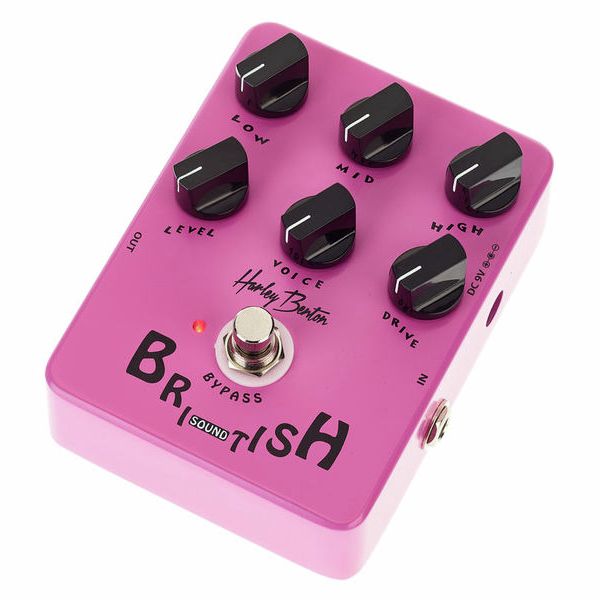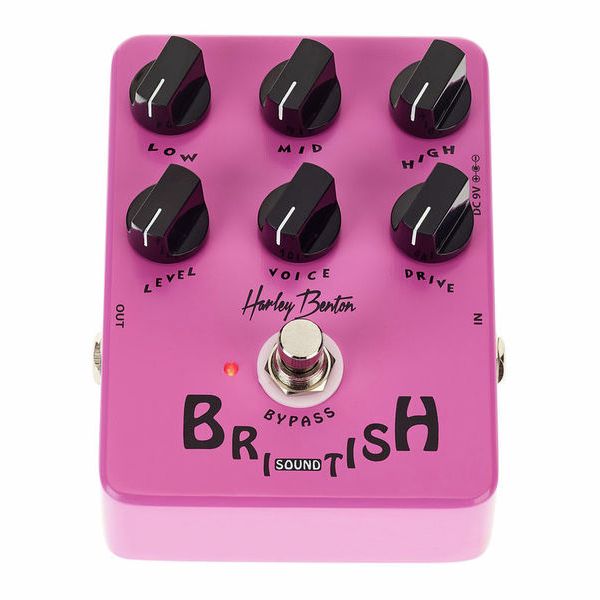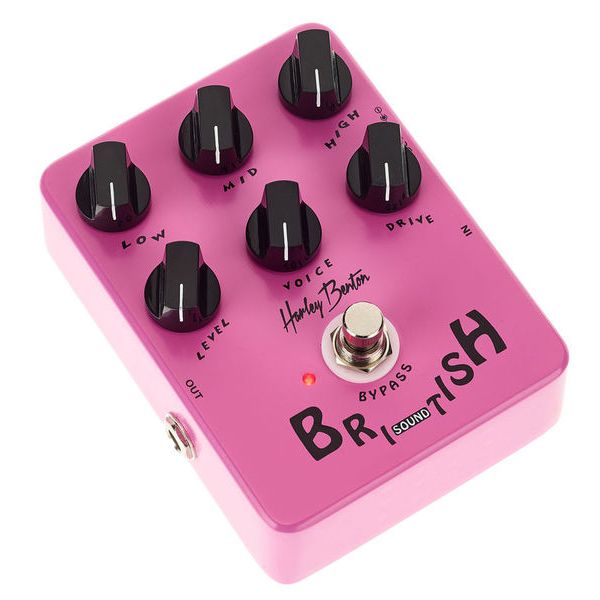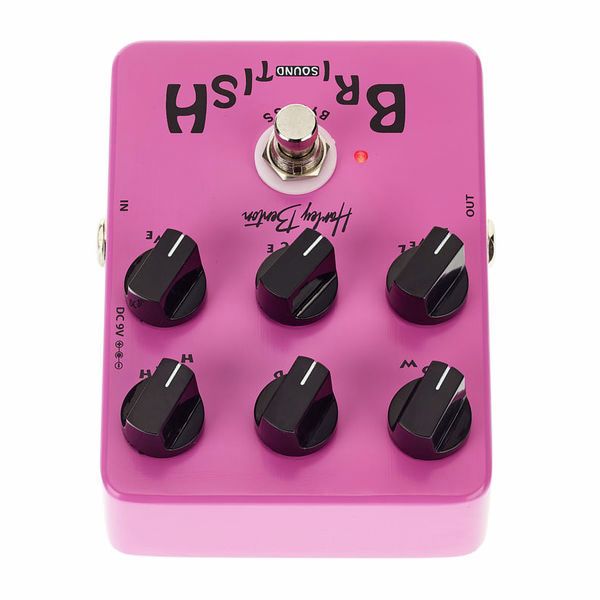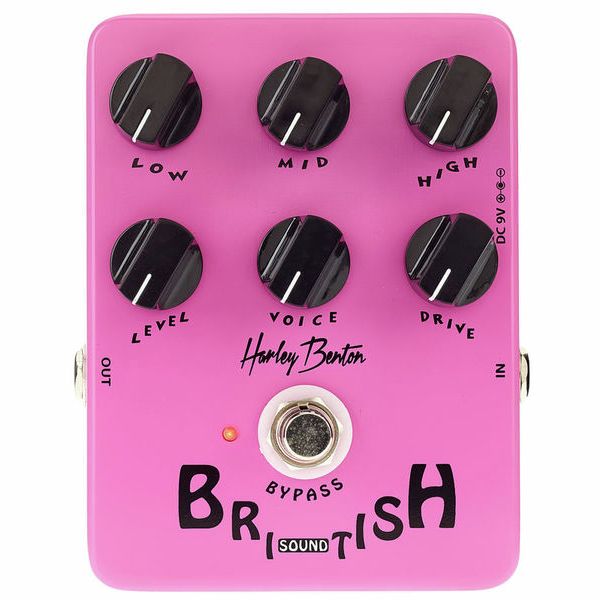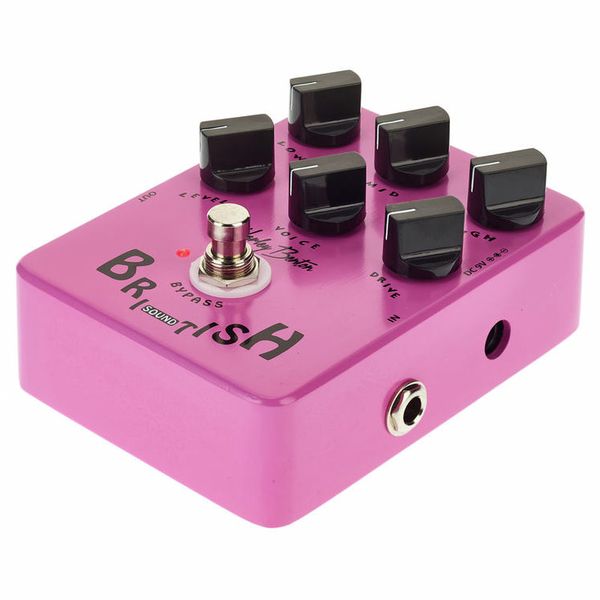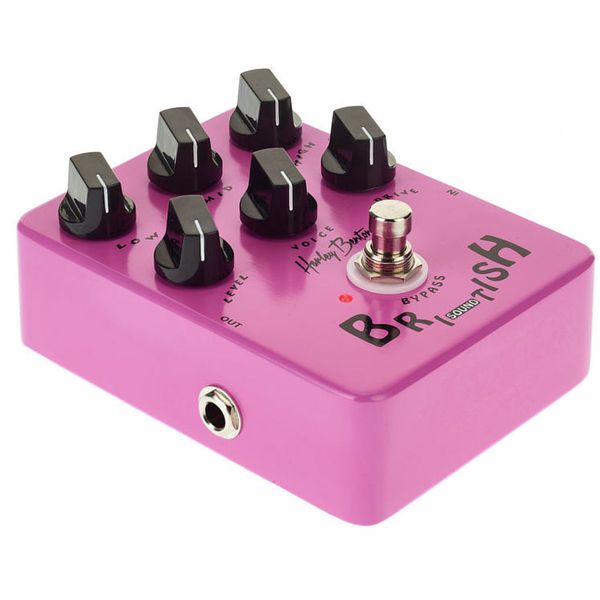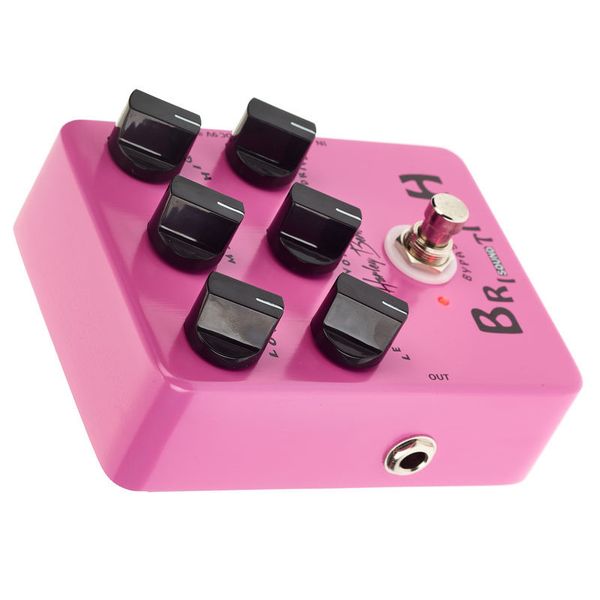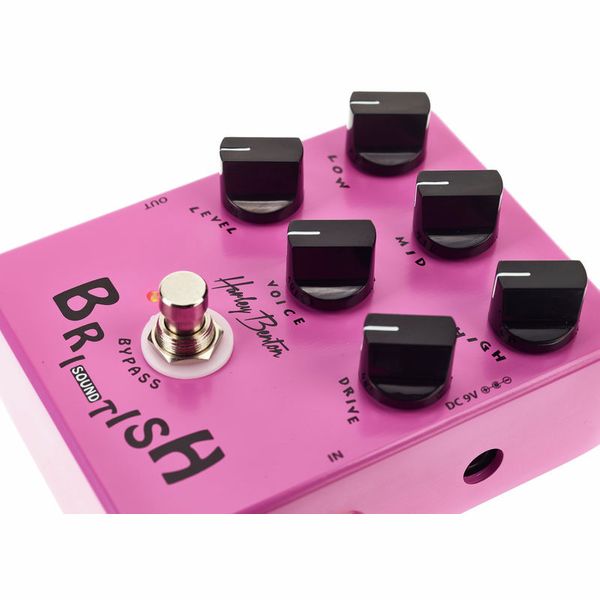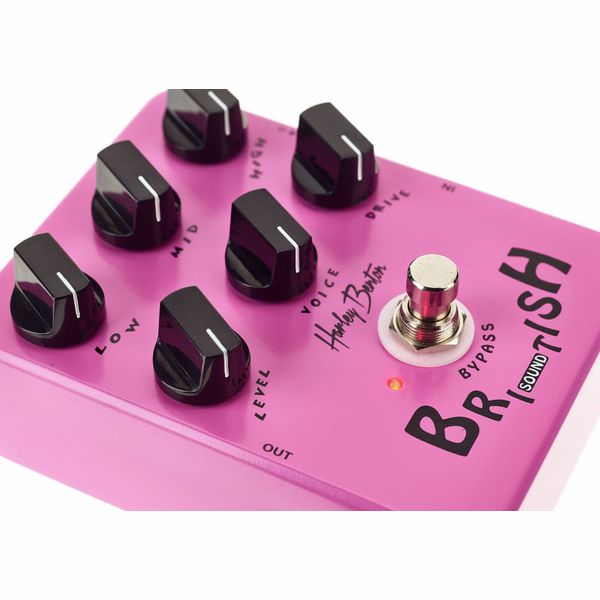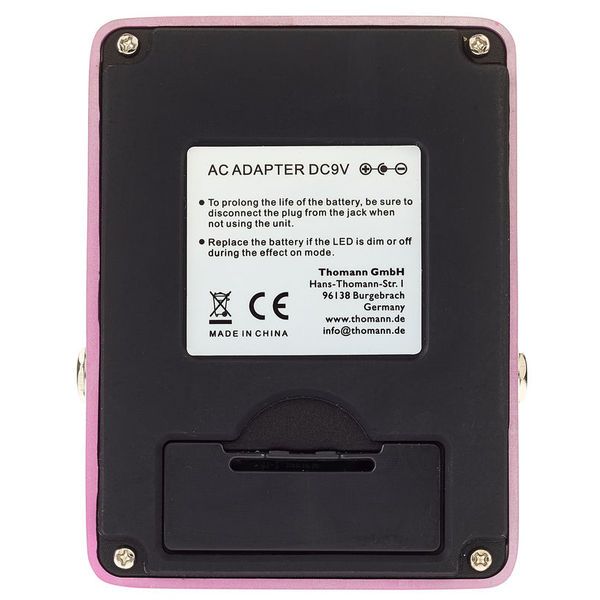Remember two things, should you choose to read this review: 1/ I own five Harley Benton (HB) basses (so I might be a little biased), and 2/ I have a "thing" about "pocket money" guitar effect pedals (i.e., on average, I buy a $20 effects pedal every week, just to "see and hear" if they are any good ~ which they usually are). Hence, when I found myself looking for a guitar preamp (yeah, I'm a guitar playing bassist), and stumbled across a Harley Benton preamp pedal for a mere £27, the product clearly nailed criterion #1 and wasn't pushing criterion #2 very hard either. Simply put, it seemed well worth the risk, although I had tempered my expectations to err on the side of caution and to be somewhat reserved. After all, what can you realistically expect for £27 and, anyhow, being a "British" branded product, is rather demanding of that quintessentially British form of reserved anticipation, right?
Anyhow, when it arrived (quickly as I expect from Thomann), the Brit-Sound pedal was quickly unpacked and placed safely on one of my pedalboards. This simple action, alongside a cursory glance at the product informed me that 1/ it was heavier than expected, implying a durable construction (good old, belt and braces German engineering), 2/ It was pink; yeah, "PINK"; most definitely pink, 3/ There was a latching switch, input and output jacks, each in their standard positions although (IMHO), the 9V DC socket should be on the front of the unit (it isn't, although it is still an appropriate distance from the input jack), and 4/ there are six controls, arranged in two rows of three. Hence, despite being pink and the position of the 9V DC socket, so far so good.
So, moving on to the controls (and by this time having connected my guitar ~ a Standard Variax in analogue mode ~ to the input, and a pair £30 headphones to the output, via a Behringer Xenyx 802 mini mixing desk), I set all six rotary controls to their "noon" positions. This actually sounded very good but, as I don't like "dirt" whilst testing EQ functionality, I turned the "voice" and "drive" controls (on the second row) to their minimum positions (which still sounded fine ~ but much more "clean). Also, as the overall volume seemed somewhat weak, I turned the "level" control (also in the second row) up to full. Sound-wise, everything was still good, so I set about "playing" with the EQ section.
As EQ goes, it's nice and simple; as it should be. It consists of three controls: "low", "mid" and "high", positioned left to right and making up the entire first row (as described above). Now, the way in which I go about testing EQ functionality is simple: I tweak the controls, just a little, one by one and, in so doing, listen carefully for tonal changes. I must admit that I was relieved, more than a little (if I am honest) to find that unlike some other units I could mention, these EQ controls really do what they are supposed to i.e., change the tonal envelope (frequency distribution, etc.). Hence, dialling up the required tone is easy (and might even surprise you in terms of your "optimal" settings). In summary, all good stuff, so time to return to the second row.
As above, the second row consists of three controls: "level", "voice" and "drive" and, again these have already been set to their maximum, minimum and minimum positions respectively. There didn't seem to be any reason to adjust the level, so I moved on to the other two controls. Again, the test is simple: perform a small tweak and listen. Now, I already had a good sound i.e., minimal grit, but altering the "voice" and "drive" controls proved to be as impressive as the EQ section. Simply put, increasing the "voice" setting emulates the sound characteristics that you would encounter by gradually increasing the volume of a valve amp (but in a more controlled manner). Again, this control provides access to a wide range of great sounds. The "drive" control provides an equally impressive range of, well, drive sounds; from elementary grit to full-on overdrive/distortion but, to my mind, falling short of "fuzz", which for me, is a good thing (e.g., I have lots of dirt pedals but no fuzz; yuch!). Simply put, there are lots of sounds, all fit for purpose depending upon what you require. Attaining this sound is akin to a "balancing act" between the "voice" and "drive" settings. It's not difficult and I had several great sounds within a few minutes.
In summary, this is a rather extraordinary little stompbox, especially given the price. I say this based upon yet another simple test: The longer you use it in a single sitting, the better it is. For me, this equated to three hours without a break (not that it seemed like that; I was just having a good time). Hence, highly recommended, even though it is pink. Then again, I have already devised a strategy to get around this quirky characteristic. Simples; buy another model from the HB guitar preamp pedal range. I mean, what's not to like for £27?


